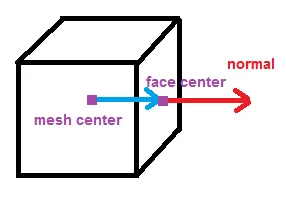我是一个计算机图形学的新手,如果我的语言不准确或者问题基础的话请多多包涵。
在给定顶点列表和面列表的情况下,能否正确计算出面法线呢:
v1: x_1, y_1, z_1
v2: x_2, y_2, z_2
...
v_n: x_n, y_n, z_n
f1: v1,v2,v3
f2: v4,v2,v5
...
f_m: v_j, v_k, v_l
每个
x_i、y_i和z_i都指定了三维空间中的顶点位置(但不一定是向量)。每个
f_i包含指定它的三个顶点的索引。我知道可以使用面的两边的叉积来得到法线,但该法线的方向取决于两边的顺序和选择(据我所知)。
考虑到这是我唯一拥有的数据,是否可能正确确定法线的方向?或者至少能够一致地确定它们吗?(所有法线可能都指向错误的方向?)


